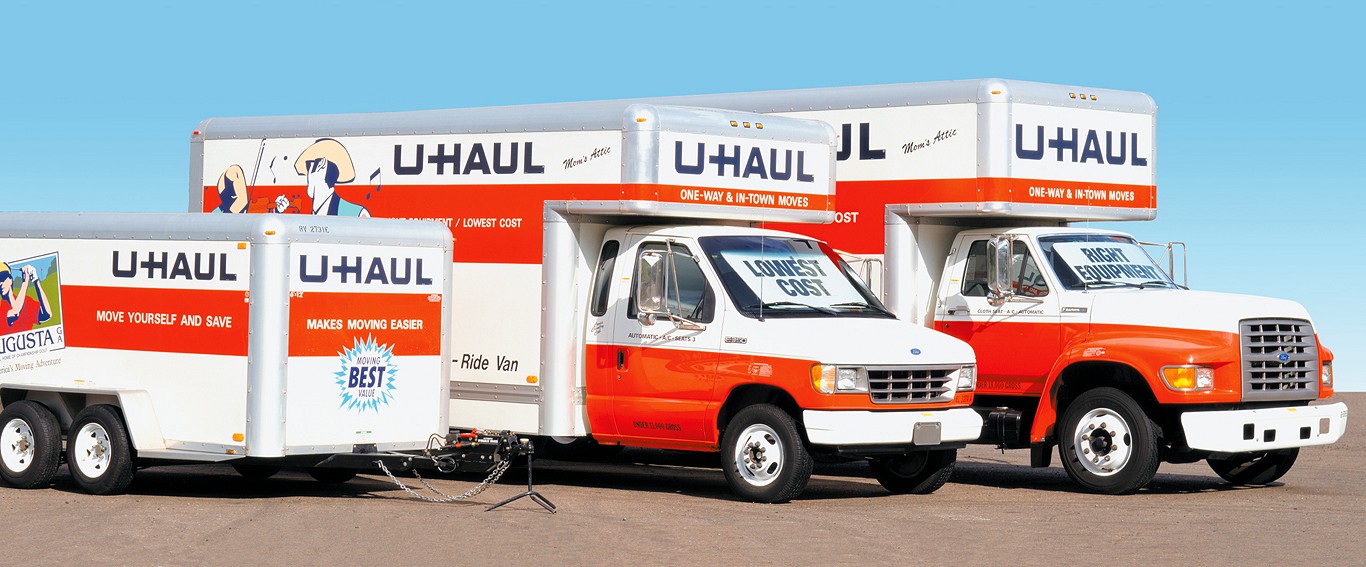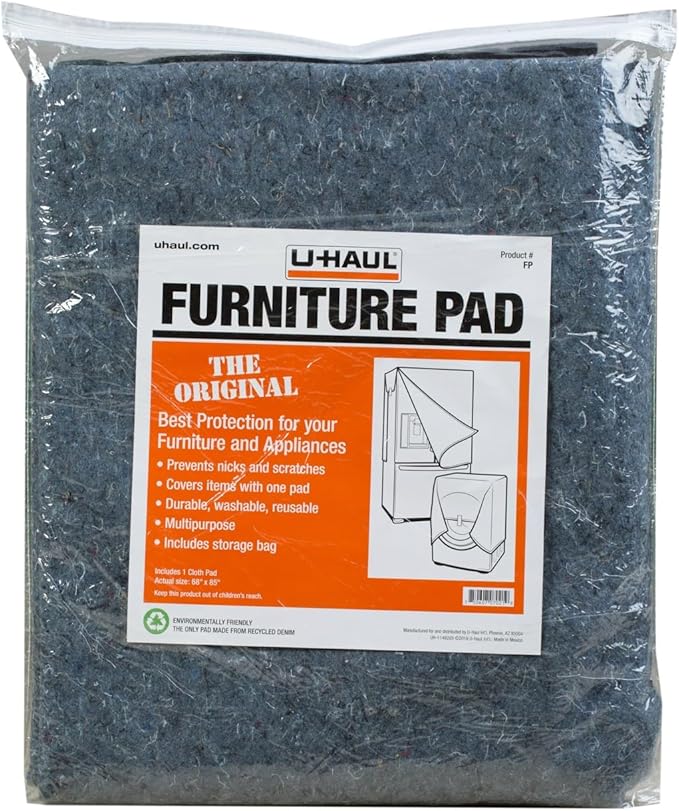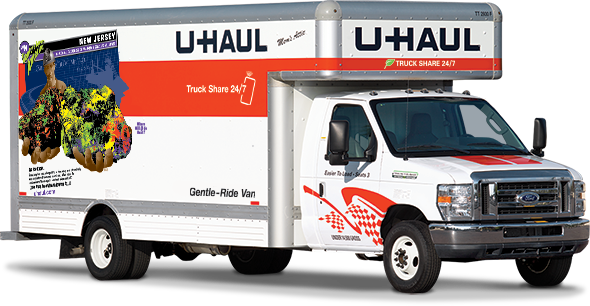U-Haul Movers: Your Definitive Guide to a DIY Moving Solution

U-Haul Movers: Your Definitive Guide to a DIY Moving Solution
Moving can be one of life’s most stressful events, but with the right tools and planning, it doesn’t have to be. For millions, U-Haul movers represent the quintessential do-it-yourself moving solution, offering unparalleled flexibility, accessibility, and cost-effectiveness. Far more than just a truck rental service, U-Haul provides a comprehensive ecosystem of moving equipment, supplies, storage, and even professional labor, empowering individuals and families to take control of their relocation journey. This detailed guide will navigate every aspect of leveraging U-Haul movers for a smoother, more efficient, and less daunting move.
Understanding the U-Haul Ecosystem: More Than Just Trucks
When people think of U-Haul movers, the iconic orange trucks are often the first image that comes to mind. However, U-Haul’s offerings extend far beyond vehicle rentals, encompassing a wide array of services designed to support every stage of a move.
- Truck Rentals: The cornerstone of U-Haul’s service. From small pickup trucks and cargo vans perfect for local moves or hauling, to an extensive range of moving trucks (10ft, 15ft, 20ft, 26ft) designed for apartments to large homes, U-Haul provides a size for every need. Each truck is engineered for ease of driving and efficient loading, featuring low decks and wide ramps.
- Trailer Rentals: For those with their own towing vehicle, U-Haul offers various trailers. Cargo trailers provide enclosed space for belongings, utility trailers are ideal for open-air hauling, while car haulers and tow dollies facilitate transporting vehicles across distances.
- Self-Storage: U-Haul also operates a vast network of self-storage facilities, offering secure and affordable storage units in various sizes, often co-located with their rental centers. This provides a convenient solution for temporary storage during a move or for long-term needs.
- Moving Helpers®: Recognizing that not everyone wants to do all the heavy lifting, U-Haul connects customers with independent, local moving labor. These U-Haul movers can assist with loading, unloading, packing, and even cleaning, providing an invaluable service for those seeking extra muscle without hiring a full-service moving company.
- Moving Supplies: From sturdy moving boxes of all sizes to packing tape, bubble wrap, furniture pads, dollies, and utility hand trucks, U-Haul stores are a one-stop shop for all essential packing and moving supplies, ensuring your belongings are protected.
Why Choose U-Haul for Your Move? Benefits & Advantages
The enduring popularity of U-Haul movers stems from several compelling benefits that cater specifically to the needs of the DIY mover.
- Cost-Effectiveness: For many, the primary draw of U-Haul is the significant cost savings compared to full-service moving companies. By handling the packing, loading, driving, and unloading yourself, you drastically reduce labor costs, often making it the most budget-friendly option.
- Flexibility and Control: U-Haul movers empower you to dictate your moving timeline. You set your own pace for packing, loading, and driving, without being constrained by a moving company’s schedule. This control is invaluable, especially for complex moves or those requiring multiple stops.
- Accessibility and Availability: With thousands of locations across North America, U-Haul offers unparalleled convenience for pickup and drop-off, even for one-way moves. This vast network means you’re rarely far from a U-Haul center, simplifying logistics.
- Diverse Equipment Selection: Whether you’re moving a studio apartment across town or a five-bedroom house across the country, U-Haul has the right equipment. The wide range of truck sizes, trailers, and accessories ensures you only pay for what you need, optimizing your move.
- One-Stop Moving Solution: The ability to rent equipment, purchase supplies, hire labor, and secure storage all from a single provider streamlines the moving process, saving time and effort in coordination.
How to Plan and Execute Your U-Haul Move: A Step-by-Step Guide
Successfully using U-Haul movers requires careful planning and execution. Follow these steps for a smooth relocation.
Step 1: Assess Your Needs and Plan Ahead
- Determine Truck Size: Accurately estimate the volume of your belongings. U-Haul provides helpful guides on their website to match truck sizes to home sizes (e.g., 10ft for studio/1-bedroom, 26ft for 4+ bedrooms).
- Consider Additional Equipment: Do you need a furniture dolly, appliance dolly, or an auto transport trailer for your car?
- Estimate Supplies: Make a list of boxes, tape, bubble wrap, and furniture pads.
- Book Early: Especially during peak moving seasons (summer, end of month), reserve your truck and equipment several weeks in advance to ensure availability and potentially better rates.
Step 2: Make Your Reservation
- You can reserve online, via phone, or in person at a U-Haul location.
- Specify your pickup and drop-off locations, dates, and times. For one-way moves, be prepared for potential adjustments to pickup locations if your first choice isn’t available.
- Review insurance options (Safemove®, Safemove Plus®, Safetow®) and decide what coverage is right for you.
Step 3: Pick Up Your U-Haul Equipment
- Required Documents: Bring your valid driver’s license (no special license usually required for U-Haul trucks) and a credit card for payment.
- Inspection: Before leaving the lot, thoroughly inspect the truck for any existing damage and ensure it’s noted on your contract. Check tire pressure, lights, and fluid levels.
- Familiarize Yourself: Ask the attendant any questions about operating the vehicle, including mirror adjustments, turning radius, and fuel type.
Step 4: Loading Strategies
- Heavy Items First: Load heavy, bulky items like appliances and large furniture at the front of the truck, closest to the cab.
- Weight Distribution: Distribute weight evenly from side to side to maintain balance and prevent swaying.
- Secure Your Load: Use furniture pads to protect items and tie-downs or rope to secure everything tightly, preventing shifting during transit. Utilize the truck’s tie-down points.
- Utilize Vertical Space: Stack boxes strategically, placing heavier boxes at the bottom.
- Leave an "Essentials" Path: Keep a clear path to access essential items like cleaning supplies or a "first-night" box if needed.
Step 5: Driving Safely
- Adjust Driving Style: Remember you’re driving a much larger, heavier vehicle. Increase following distance, brake earlier, and take turns wider.
- Mind Overhead Clearances: Be aware of the truck’s height, especially when entering tunnels, parking garages, or under low bridges.
- Check Mirrors Frequently: Large vehicles have larger blind spots.
- Fuel Up: U-Haul trucks typically run on unleaded gasoline. Be mindful of the fuel policy – you usually need to return it with the same fuel level as pickup.
Step 6: Unloading and Returning
- Unload Efficiently: Have a plan for where items will go in your new home.
- Clean the Truck: Remove all trash and personal belongings. While not strictly required, a clean truck is good etiquette.
- Refuel: Fill the gas tank to the required level.
- Return on Time: Avoid late fees by returning the truck and equipment by the agreed-upon time to the specified location.
Key Considerations for a Smooth U-Haul Experience
To maximize the benefits of U-Haul movers, keep these crucial points in mind:
- Insurance: While your personal auto insurance might offer some coverage, it’s often limited for rental trucks. U-Haul’s Safemove® and Safemove Plus® provide essential coverage for damage to the rental equipment and your belongings. It’s a small investment for significant peace of mind.
- Fuel Policy: Always clarify the fuel policy upon pickup. Most require returning the truck with the same fuel level as when you started. Failure to do so will result in a refueling charge, which can be more expensive than filling it yourself.
- Mileage Charges: For local rentals, a base daily rate applies, plus a per-mile charge. For one-way rentals, a specific mileage allowance is typically included in the base rate, with an extra charge for exceeding it. Plan your route to stay within the allowance if possible.
- Booking Moving Helpers: If you plan to use U-Haul’s Moving Helpers, book them through the U-Haul platform to ensure they are vetted and insured. Coordinate directly with them regarding arrival times and specific tasks.
- Packing Materials: Don’t skimp on quality packing materials. Sturdy boxes, ample padding, and strong tape are your best defense against damaged belongings.
Tips for a Stress-Free U-Haul Move
- Declutter Ruthlessly: Before you pack, get rid of anything you don’t need or use. Less stuff means a smaller truck and less work.
- Pack an "Essentials" Box: Label a box clearly with "Open First" and fill it with necessities like toiletries, medications, a change of clothes, phone chargers, snacks, and important documents.
- Label Boxes Clearly: Write the room destination and a brief list of contents on at least two sides of each box.
- Take Photos: Photograph electronics setups before unplugging them to make reassembly easier.
- Recruit Help (or Hire It): Moving is a team effort. Ask friends and family to lend a hand, or leverage U-Haul’s Moving Helpers for the heavy lifting.
- Stay Hydrated and Take Breaks: Moving is physically demanding. Drink plenty of water and allow yourself time to rest.
- Know Your Route: Plan your driving route in advance, especially for long distances. Identify gas stations, rest stops, and potential low clearances.
Potential Challenges and Solutions
Even with the best planning, challenges can arise. Here’s how to tackle them with U-Haul movers:
- Challenge: Equipment Not Available at Preferred Location/Time.
- Solution: Be flexible. U-Haul may offer an alternative pickup location nearby, sometimes with an incentive. Book as far in advance as possible.
- Challenge: Unexpected Costs.
- Solution: Thoroughly understand your rental agreement, including mileage, fuel policy, and insurance. Return the truck on time and with the correct fuel level to avoid surprises.
- Challenge: Difficulty Driving a Large Vehicle.
- Solution: Take it slow. Practice in an empty parking lot if possible. Use spotters when backing up. Remember the increased turning radius and braking distance.
- Challenge: Physical Strain and Injuries.
- Solution: Use proper lifting techniques (lift with your legs, not your back). Utilize dollies and hand trucks. Don’t hesitate to hire Moving Helpers for strenuous tasks.
- Challenge: Damage to Belongings.
- Solution: Pack carefully with appropriate materials, secure items inside the truck, and consider purchasing U-Haul’s Safemove Plus® insurance.
U-Haul Movers: Estimated Pricing Guide
Please Note: U-Haul prices are highly dynamic and vary significantly based on location, date, demand, duration of rental, and specific equipment availability. The prices below are estimates and are provided for illustrative purposes only. Always check the U-Haul website or contact a representative for current and accurate pricing for your specific move.
| Service/Equipment Category | Typical Local Rate (Per Day) | Typical One-Way Rate (Base Rate + Mileage Allowance) | Additional Notes |
|---|---|---|---|
| Trucks | Local rates typically include a daily rental fee + per-mile charge (e.g., $0.99/mile). One-way rates are a flat fee for the trip, including a mileage allowance. | ||
| Pickup Truck | $19.95 – $29.95 | Not typically offered for one-way | Great for small hauls, local deliveries. |
| Cargo Van | $19.95 – $39.95 | Not typically offered for one-way | Ideal for studio apartments or small jobs. |
| 10′ Moving Truck | $19.95 – $39.95 | $200 – $600+ | Studio to 1-bedroom apartment. |
| 15′ Moving Truck | $29.95 – $49.95 | $300 – $800+ | 1-2 bedroom home/apartment. |
| 20′ Moving Truck | $39.95 – $59.95 | $400 – $1000+ | 2-3 bedroom home. |
| 26′ Moving Truck | $39.95 – $59.95 | $500 – $1200+ | 3-4+ bedroom home. |
| Trailers | Requires a vehicle with a towing hitch. Daily rates. | ||
| Cargo Trailer (4×8 to 6×12) | $14.95 – $29.95 | $50 – $200+ (for one-way) | Enclosed, good for protecting items. |
| Utility Trailer (4×7 to 6×12) | $14.95 – $29.95 | $50 – $200+ (for one-way) | Open, good for bulky, weather-resistant items. |
| Tow Dolly | $44.95 – $64.95 | $100 – $300+ (for one-way) | For front-wheel drive vehicles. |
| Car Hauler | $54.95 – $74.95 | $150 – $500+ (for one-way) | For all vehicle types. |
| Moving Helpers (Labor) | Hourly rates per person. Minimum hours usually apply. | ||
| Loading/Unloading | $40 – $60 per hour, per person | N/A | Varies by location and service. |
| Self-Storage | Monthly rates. Prices vary significantly by location and unit size. | ||
| 5’x5′ Storage Unit | $50 – $100+ per month | N/A | |
| 10’x10′ Storage Unit | $100 – $200+ per month | N/A | |
| Moving Supplies | One-time purchase. | ||
| Medium Moving Box | $1.50 – $2.50 | N/A | |
| Packing Tape (Roll) | $3.00 – $5.00 | N/A | |
| Furniture Pads (Rental) | $5.00 – $10.00 per dozen | N/A |
Frequently Asked Questions (FAQ) about U-Haul Movers
1. How old do I need to be to rent a U-Haul?
You must be at least 18 years old to rent a U-Haul truck or trailer. For self-storage, the age requirement is typically 18 as well.
2. Do I need a special driver’s license to drive a U-Haul truck?
No, a standard driver’s license (Class D in most states) is sufficient for all U-Haul rental trucks and trailers. No commercial driver’s license (CDL) is required.
3. What kind of gas do U-Haul trucks use?
All U-Haul trucks use unleaded gasoline. You should never put diesel fuel into a U-Haul truck.
4. Can I tow my car behind a U-Haul truck?
Yes, U-Haul offers tow dollies (for front-wheel drive vehicles) and car haulers (for all vehicle types) that can be rented along with a moving truck. Ensure your truck rental is rated for the combined weight of your vehicle and the towing equipment.
5. What happens if I return the U-Haul truck late?
Returning a U-Haul late can result in additional charges, typically a daily rental fee for each day or portion of a day beyond your agreed return time. It’s always best to communicate with U-Haul if you anticipate a delay.
6. What is U-Haul’s insurance policy, and do I need it?
U-Haul offers various coverage options like Safemove® (damage to the rental truck) and Safemove Plus® (damage to the truck and your cargo, plus medical/life coverage). While not mandatory, it’s highly recommended as personal auto insurance policies often do not cover rental trucks.
7. Can I drop off my U-Haul at a different location than where I picked it up?
Yes, U-Haul specializes in one-way rentals, allowing you to pick up equipment at one location and drop it off at another U-Haul center in a different city or state. Local rentals typically require return to the pickup location.
8. Are U-Haul trucks automatic or manual transmission?
All U-Haul moving trucks are equipped with automatic transmissions, making them easier to drive for most individuals.
Conclusion
U-Haul movers stand as an indispensable resource for anyone planning a relocation. By offering a comprehensive suite of equipment, supplies, storage solutions, and even professional labor assistance, U-Haul empowers individuals to manage their moves with unparalleled control and cost-efficiency. While a DIY move requires careful planning and effort, the benefits of flexibility and savings are substantial. With the insights and practical advice provided in this guide, you are well-equipped to navigate the process, transforming what could be a stressful ordeal into a well-organized, successful transition to your new home. Embrace the power of U-Haul movers, and take charge of your moving journey with confidence.



